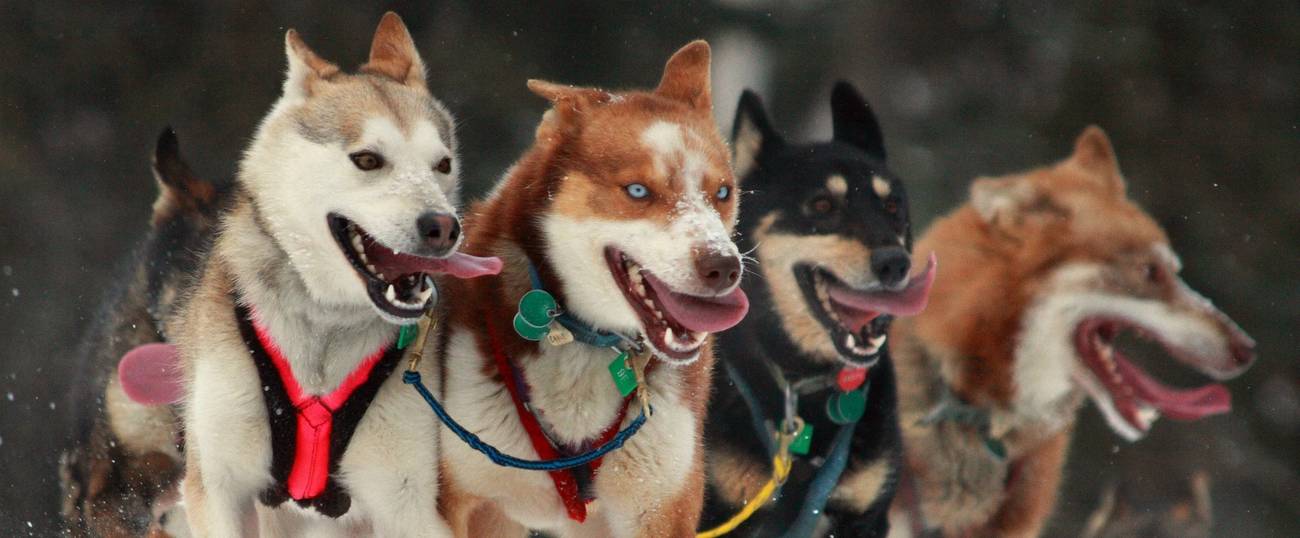The Dog Days of Yiddish
What’s the difference between a hound and a human? Just ask the mamaloshen.




The 46th running of Alaska’s famed Iditarod Trail Sled Dog Race kicks off in Anchorage this Saturday (I won’t be attending). In advance of the race, a group of activists with People for the Ethical Treatment of Animals (PETA) held a funeral for five dogs that died during last year’s race.
Which reminded me of a Yiddish word.
When I first moved to New York, nearly a quarter century ago, my family and I took the Staten Island Ferry from the forgotten borough, where we lived and still do, to Manhattan, where I was to begin a new job.
We oohed and aahed at the Statue of Liberty as tourists are wont to do, and I still greet the stately lady daily, just as she greeted my father, of blessed memory, when he arrived on these shores in the late 1940s. Lady Liberty and I have seen each other some 12,000 times by now.
That first ferry ride was memorable, though, for another reason, too. Walking through Battery Park in Lower Manhattan, I was approached by an elderly African-American gentleman who, to my surprise (I hadn’t yet learned that most anything can and does happen in New York), asked me if I spoke Yiddish. Though momentarily taken aback, I managed to respond “a bissl,” “a little” (which, despite my interest in the language, unfortunately remains the case today).
Then he really surprised me. “How do you say ‘the dog died’?”
“Der hundt hut geshtorben,” I responded confidently.
“Wrong,” my interrogator said dismissively. “Der hundt hut gepaygert. Nohr menshen shtorben.” Dogs payger. Only people shtorb. I realized that he was correct and that I had been bettered. I thanked him and he went on his way. New York, New York.
There are, in fact, two distinct Yiddish words for “died,” one used for an animal and one for a person. Yiddish is a teacher. There is too much of a difference between human and animal life to refer to its ending with the same word.
The deceased animal word is actually a formation from the Hebrew word “payger,” or carcass. In fact, the English word “carcass” is properly used only with reference to an animal; a departed human’s intact remains comprise a corpse.
The Yiddish word for a human being’s demise, “shtorben,” originated in the German sterben, meaning “to be stiff or still,” and which may be the root of the English “starve”—which originally meant to die from any cause, and was only first associated with lack of nutrition in the 1500s.
But I digress.
Among Orthodox Yiddish-speakers, even shtorben is often avoided as insufficiently respectful of those who have passed on. The word they use is niftar, borrowed from the Hebrew, where it means “freed from” or “left the premises.”
The famous eccentric mathematician Paul Erdős used to refer to fellow mathematicians who stopped doing mathematics as having “died,” and to people who died as having “left.” (I digress further but thought you might find that of interest.)
To return to PETA’s five-dog funeral, the group’s founder and president, Ingrid Newkirk, once famously declared that “A rat is a pig is a dog is a boy.”
Yiddish (reflecting Judaism) begs to differ. A dog is a dog; and a boy, a boy.
Rabbi Shafran, whose latest book is “It’s All In The Angle” (Judaica Press), blogs at rabbiavishafran.com.